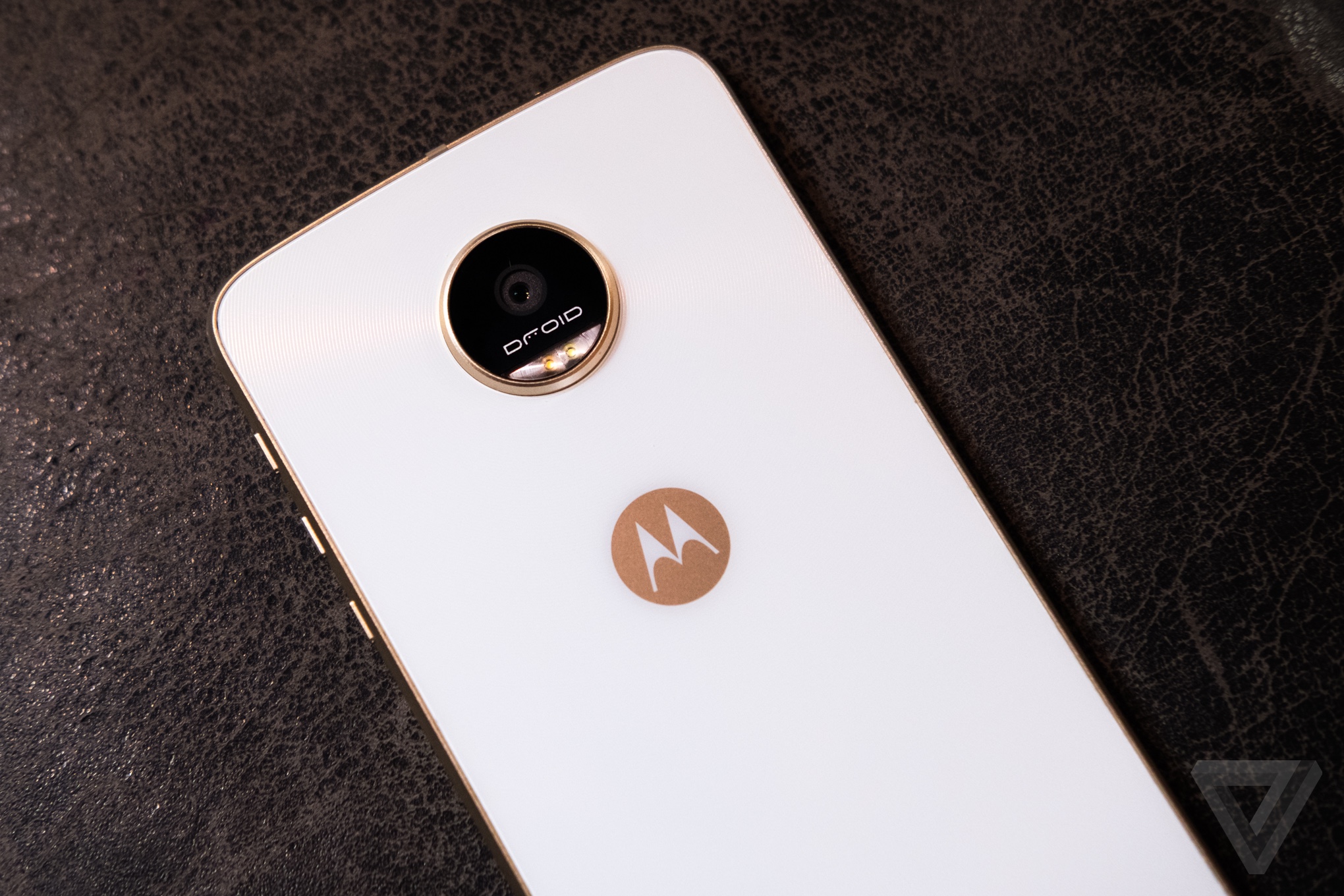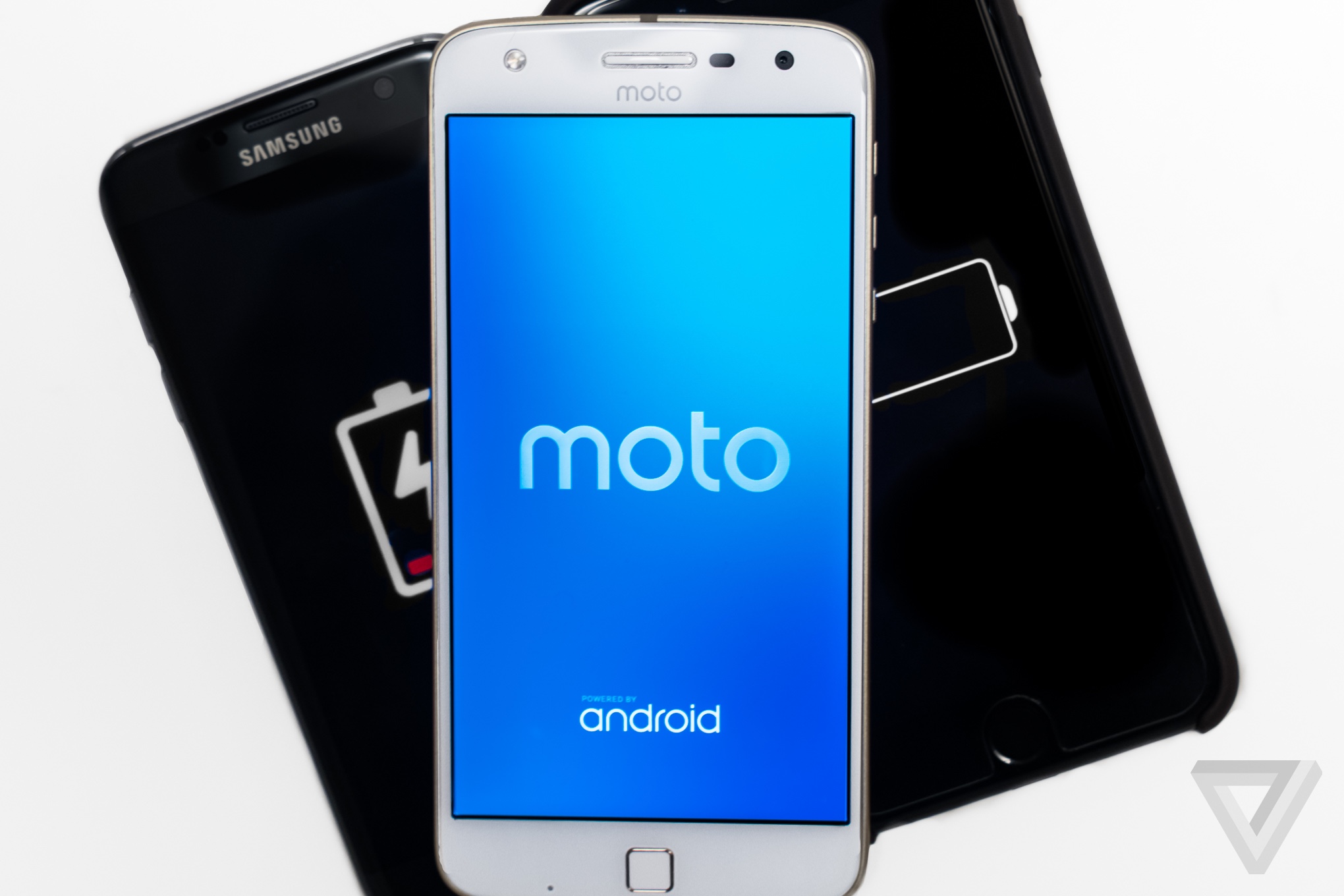The Moto Z Play from Lenovo has the best battery life of any smartphone I’ve ever used. It’s so good and so superior to the competition that this — the third member of the Moto Z family — just became my top recommendation if battery life is your most important criteria in choosing a smartphone. Smartphone makers have claimed again and again that their devices can last for “up to two days” on a single charge. It’s almost always braggadocio and overpromising. Inevitably you find yourself reaching for a charger by 6PM or, in the case of phablets, at the end of the night. But not this time.
Lenovo found an approach that allowed the company to make a phone you can charge up overnight, unplug the next morning, and use for two days straight. No asterisks. No buts. It’s been such a refreshing thing to experience over the few weeks I’ve spent with the Moto Z Play. And it turns out the formula is pretty simple! You combine a big battery, a new, mid-range Qualcomm processor that slowly sips power, and then “settle” for a 1080p screen and 3GB of RAM.
But the Moto Z Play rarely feels like you’re doing much settling. Even when you add together the negatives like an average camera, Verizon’s annoying bloatware, and Lenovo’s poor track record with software updates, the Moto Z Play’s affordable price, zippy performance, and unbelievable battery life still add up to something very compelling. And yes, unlike the Z and Z Force, there’s even a headphone jack built in. Forget the Z’s before it; this is the practical Moto Z that most people should get. It’s available exclusively from Verizon Wireless for a limited time for $408, but starting in October you can get it unlocked on GSM carriers (and free of carrier bloat) for $450.

The Moto Z Play is being positioned as the affordable Moto Z, but there’s little that's budget about its design. It's got a colorful 5.5-inch 1080p Super AMOLED display. The foundation remains a glass and aluminum sandwich with the same splash-proof coating as its pricier siblings. But this is the thickest (6.99mm) and heaviest (5.82oz) member of the Moto Z family, and it can feel a little clunky at times. There’s a USB-C jack on bottom with a headphone jack beside it — allowed by those thicker proportions — and the volume and power buttons on the phone’s right side feel just as nice and clicky here as on the other Zs. They’re still placed a little high and confusingly close together, though. The fast, not-a-home-button fingerprint sensor is also carried over from the main Moto Z.
You could probably argue that the Z Play feels slightly more premium than the flagship Moto Z; the glass looks a little classier than the pinstriped metal that’s on back of the regular model and Z Force, and fingerprints are much easier to wipe away. One odd thing I’ve observed is that the glass on front and back of the Z Play scratches more easily than other phones I’ve used recently. Also, I somehow wound up with a little tiny crack near the front-facing camera on my review unit, so don’t expect this to be anywhere near as durable as the Moto Z Force.
The ugliest thing about this design is the MotoMod connector pins, which are lined up in a rounded rectangle near the bottom of the phone’s backside. It’s much more of an eye sore than the subtler rows of dots on the other Zs. But since you’ll almost always have a case, style shell, or one of the MotoMods attached, you’ll never really have to look at it. Interestingly, MotoMods don’t latch onto the Moto Z Play quite as tightly as they do the other phones; they’re still not going to fall off unexpectedly, but you can wiggle them a little bit. I’m not going to spend much time on MotoMods here. They’re fun and "just work" as the old tech adage goes, yes. But the speaker remains the only one I’d maybe consider buying. The Moto Z Play is your cheapest option for checking MotoMods out, but "modular" attachments aren’t a convincing reason to buy this phone.
Neither is the camera. The Z Play has a 16-megapixel sensor with f/2 aperture, laser / phase detect autofocus, and 4K video recording on board. But the results are average for this $400ish price point: you’ll get okay-to-good shots in decent lighting conditions, but things get more iffy in other scenarios. The camera’s software tricks like "best shot" and a low-light mode (where you’ve got to hold the phone still for a couple seconds) can help out in some instances, and the shutter fires fairly quickly. But the Moto Z Play loses out to the OnePlus 3 and last year’s Nexus 5X in overall picture quality. It’s serviceable, but better options exist if you put camera performance above all else. Again, most people will be buying this phone for the battery first and foremost.

Inside the Moto Z Play is Qualcomm’s Snapdragon 625 processor. It’s not the Snapdragon 820 used in top-tier smartphones — and it benchmarks accordingly. But in day to day use, it’s extremely difficult to pinpoint any performance issues. The Moto Z Play does just about everything briskly without noticeable hiccups. This is a dramatic difference from the Snapdragon 617 processor used in other midrange devices like the Moto G4 and BlackBerry’s DTEK50, where lag can become a frequent source of frustration.
For 90 percent of tasks, the Moto Z Play feels like a flagship-class device. The main exception is gaming, where the phone will struggle and stutter if you’re playing the latest titles, since the graphics horsepower just isn’t there. Stuff like Pokemon Go, The Room, Monument Valley, Two Dots, and Lara Croft Go is certainly playable, if not always perfect. The phone’s memory (3GB of RAM) means that background apps will need to reload more often when you return to them in multitasking, but it rarely stood out to me as an issue.
Compared to a speedier processor, the Snapdragon 625’s tradeoff in performance is usually imperceptible. But the gains in battery life are enormous. The endurance of this phone is unlike anything I’ve experienced before. Our Verge battery test would be rather useless in this situation since it would just spit out a marathon figure that's hard to contextualize.
So instead, I've been using the amount of time that the Z Play’s display is turned on as my measure of choice. The large majority of Android phones die somewhere between four and five hours of screen-on time for me, and many never even hit the latter mark. That's usually good for a day-ish of battery life on each charge. But the Moto Z Play hit new highs that changed my perception of how long a phone can and should last. Its display could be powered on at around 75 percent brightness for seven to eight hours between charges. That's just plain staggering. No one's going to look at their phone for eight hours per day, obviously. I'm an admitted smartphone addict and that number usually spread across two entire days for me — and sometimes into a third.
At times late in the day when I'd usually start getting anxious about my phone dying, I'd glance at the Moto Z Play and see that it still had an 80 percent charge in the tank. What? How? The Moto Z has the usual mix of battery saving modes and optimization settings, but I never turned any of that stuff on and was still left with my jaw on the floor. Nothing compares. Not a Galaxy S7 Edge. Not an iPhone 7 Plus. Those devices are far more technically advanced, but the Moto Z Play starts to make you wonder whether things like a 2K display or souped up processor are really worth it.
This kind of battery life opens up a different level of freedom in using your phone how you want on the go. Sure, stream a bunch of YouTube videos or a movie on Netflix; you’ll be fine. Don’t even worry about plugging it in if you need turn-by-turn directions in the car. The thing could probably chug through a cross-country flight without blinking. Separate from its supreme endurance, the Moto Z Play is just a pleasant phone to use thanks to Moto’s great software features on top of Android 6.0 Marshmallow. You’ve got Moto Voice and Moto Display here – just like on the other Moto Zs. Lenovo has said it will bring Android Nougat to the Z family sometime in Q4, but you really can’t count on the company for timely security patches. That’s disappointing, as is Verizon’s obnoxious level of crapware. But useless apps can be disabled; device security is a larger concern to think about.

Even with those caveats, I’m still a big fan of the Moto Z Play. Especially for $400! It’s bound to be overshadowed by the new iPhones, the ongoing Note crisis, and Google’s upcoming Pixel phones. And that’s a shame, really. Looking at this series alone, I think buying the ultra-thin Moto Z or toughened Moto Z Force over the Z Play would be a mistake. If you’re tired of being tethered to a phone charger or battery pack, the Moto Z Play is probably the phone for you. It’s nowhere close to perfect. But frankly, a phone that really lasts two entire days doesn’t need to be.
:format(webp)/cdn.vox-cdn.com/uploads/chorus_asset/file/13064773/play1_2040.0.0.1477665038.jpg)
:format(webp)/cdn.vox-cdn.com/uploads/chorus_asset/file/13064773/play1_2040.0.0.1477665038.jpg)
Share this story